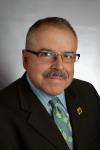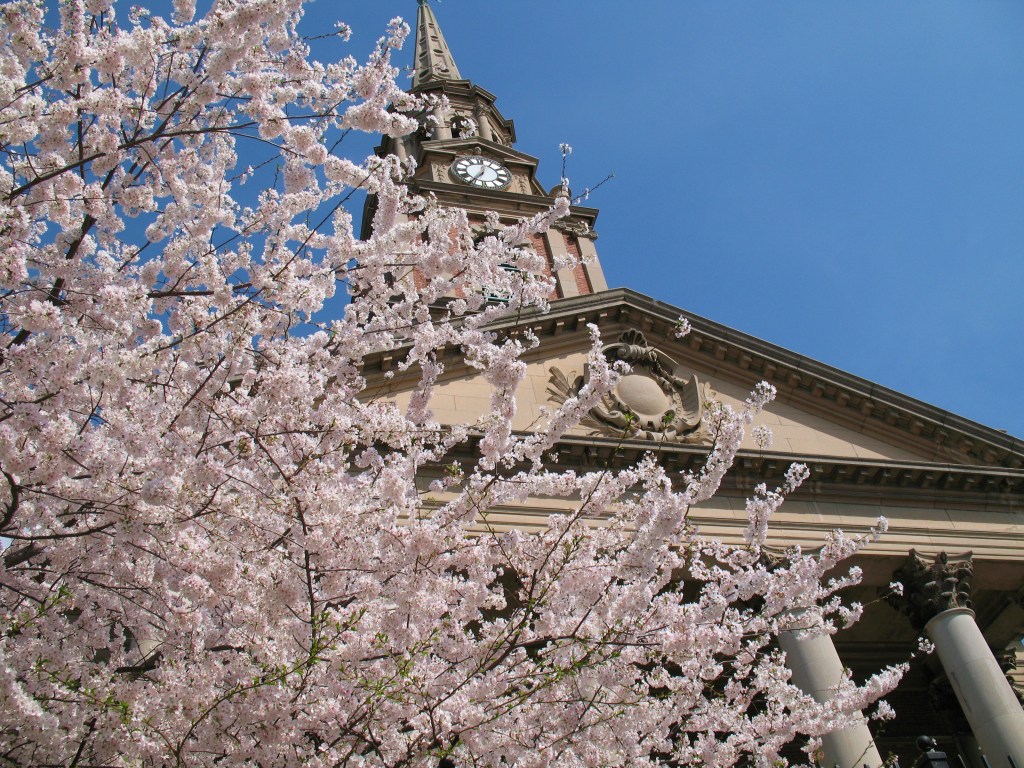
Eduardo Díaz is the director of the Smithsonian Latino Center and a 30-year veteran of arts administration. He is an advisor to the Smithsonian’s Secretary and Provost/Under Secretary for Museums and Research as well as to Congress and other government agencies on a range of cultural development issues related to Latino communities in the United States and their impact on diverse countries of origin.

The Sunday after the recent presidential election was particularly special at All Souls Unitarian Church in Washington, D.C., where I worship. Aside from Easter, I have never seen the church so packed. The ushers were caught off guard; but I don’t think they, or anyone else, were surprised by the overflow. I got the sense that congregants were seeking sanctuary, in both the religious and social sense.
I work at the Smithsonian Institution. The Smithsonian is not a government agency; it is a public trust. As such, I consider myself a public servant, and conduct myself accordingly. This means that, aside from the basic tenants of human compassion and kindness, respect for divergent views and equitable treatment of all, I do not permit my religious values and practices to influence my professional life.

The new President has stated his commitment to deporting millions of unauthorized immigrants, the majority of whom are from Latin America. Pew Research reports that approximately 19 million (35 percent) of the over 55 million Latinos residing in the U.S. are immigrants, of which some 11 million are estimated to be here with impermanent status. I believe that those within this population who have committed serious crimes need to be speedily brought to justice. However, I also understand that the conditions in some home countries have left many law-abiding, economically and socially productive individuals and their families no viable choice other than to, literally, flee northward. As a person of faith, I have compassion for their plight, and know that mass deportation will likely condemn many to lives of great uncertainty, unbearable stress, and in numerous cases, death.
Many in the Latino community are relieved that the President altered his position on individuals here under the DACA (Deferred Action for Childhood Arrivals) program. Understandably, many in this program felt threatened and looked for institutions, including religious and educational ones, to provide sanctuary. We will have to wait to see how things play out for the estimated 1.9 million individuals in this country who participate in or are eligible for the program.
In the beginning, sanctuary was defined as a sacred place, such as a shrine or other spiritual haven. With the passage of time, and by extension, the term has come to signify a place of safety, which has been actualized as such in response to the persistent, heart-wrenching global refugee crisis. Within this context, the notion of sanctuary has become increasingly complex and vexingly politicized.
The Smithsonian Institution does not take political positions. Rather, it plays to its strength, and proper role—that of researcher, exhibiter, collector, publisher, educator and convener. In exercising these roles the Smithsonian can naturally operate as a non-partisan sanctuary—a safe space for the exchange of a complete, divergent range of ideas and opinions. This would include questions relating to immigration and migration—the history, what causes these mass movements, the governing laws, its racialization, and the associated social, economic and political implications. This summer, the Smithsonian’s National Museum of American History will open Many Voices, One Nation. As their website notes, this exhibition will “offer an original, dynamic history of the ways Americans have lived and worked together, sometimes at odds, yet more often with common purpose and heart.”
Many Voices, One Nation
To be American is to live in a society shaped and reshaped by new generations, people, languages, beliefs and practices. No matter when or how we or our ancestors arrived on this continent, we all inherit this legacy.
One of the Smithsonian’s strategic initiatives is Understanding and Sustaining a Biodiverse Planet. Annually, the institution spends millions operating facilities, hiring scholars, conducting research, convening meetings, training future scientists, and publishing. These activities help address a myriad of issues, including Climate Change. The Smithsonian’s Environmental Research Center, Tropical Research Institute (in Panama), and Conservation Biology Institute play important roles in exploring environmental questions and offering up approaches to address these challenges. Next month in fact, the Smithsonian will host an Earth Optimism Summit, which will focus on the impact and future trends of the global conservation movement.
While it is important to acknowledge our present vulnerabilities, I believe it is also imperative to remind ourselves of our strengths. We must recognize the beauty of all that we are a part of, and of the abiding presence of critically important institutions, like the Smithsonian—ones that we can trust as safe places for the exchange of diverse perspectives in the pursuit of consensus solutions, regardless the matter or concern.
A version of this article originally appeared on The Huffington Post 03/03/2017.
About the Author
Eduardo Díaz is responsible for the management and delivery of exhibitions, public and educational programs and the Latino Center’s Latino Virtual Museum. Previously, Díaz was the executive director of the National Hispanic Cultural Center (NHCC) in Albuquerque, NM. He oversaw the operations of a 16-acre campus that offered year-round programming in the visual, performing and literary arts as well and youth and family activities. Before joining the NHCC, Díaz managed a private consulting firm that served arts institutions and agencies, statewide advocacy groups and community-based organizations. He specialized in business and strategic planning, cultural facilities management and cultural and heritage tourism. In 2001, he co-founded the International Accordion Festival, a free outdoor music celebration, in San Antonio. From 1981 to 1999, Díaz served as the director of Cultural Affairs for the City of San Antonio. He is currently a member of the National Association of Latino Arts and Culture. Díaz earned a law degree in 1976 from the University of California, Davis, and a bachelor’s degree in 1972 in Latin American Studies at San Diego State University. He is fluent in Spanish and Portuguese.
The Smithsonian Latino Center works to increase and enhance Latino presence, research and scholarship at the Smithsonian Institution by sponsoring, developing and promoting exhibitions, collections, research and public programs that focus on the Latino experience.
See a related message (PDF) from members of AAM’s Latino Professional Network.








Comments